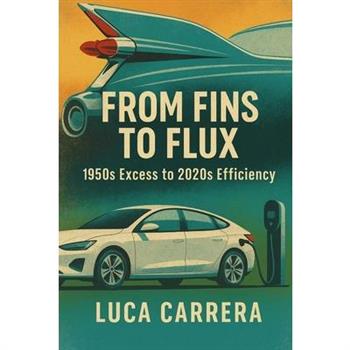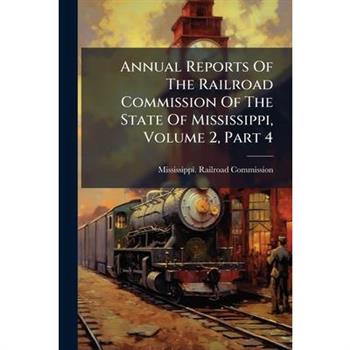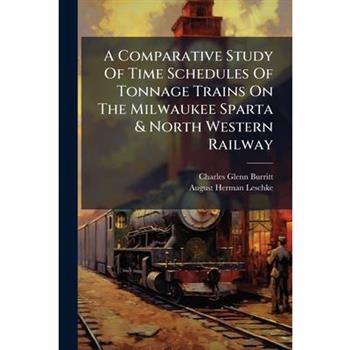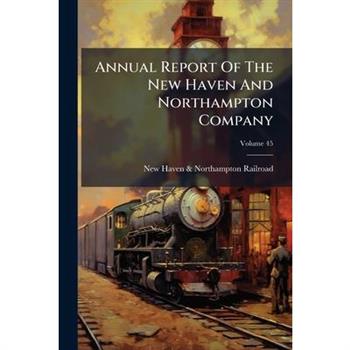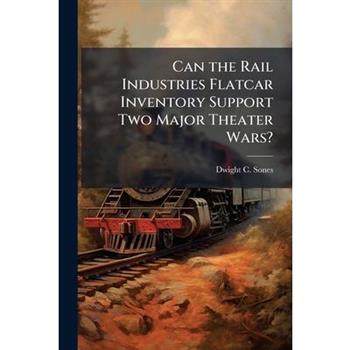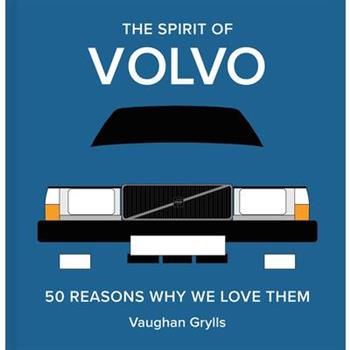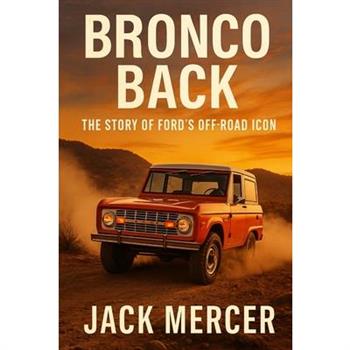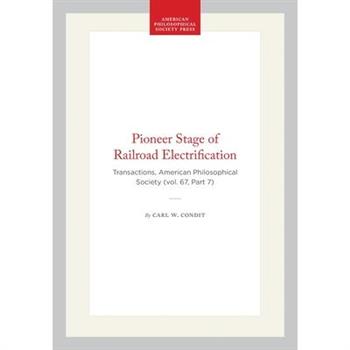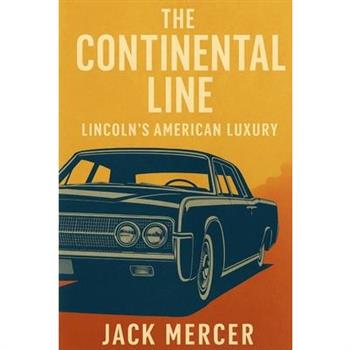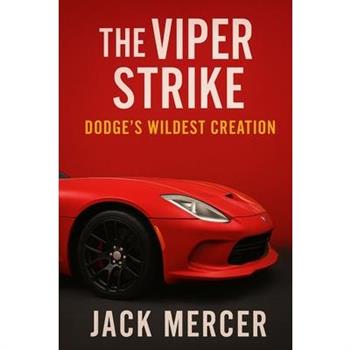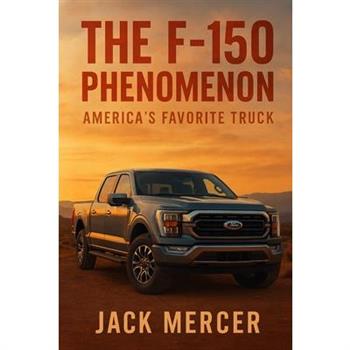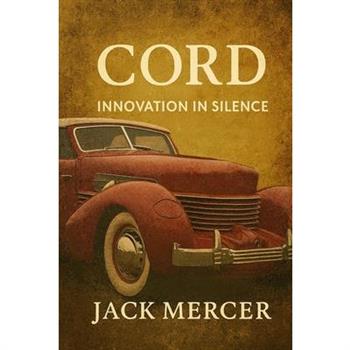Beetlemania
Born from the ambitions of pre-war Germany and nurtured through conflict, recovery, and reinvention, the Volkswagen Beetle became one of the most beloved and recognizable cars in history. Beetlemania: The Life of the Volkswagen Bug charts the full, unbroken journey of this automotive icon, from Ferdinand Porsche's first pencil strokes to the retro rebirths of the twenty-first century and the final curtain call in 2019.Meticulously researched and rich in verifiable detail, this narrative follows the Beetle's evolution through wartime improvisation, postwar resilience, economic miracles, cultural revolutions, and global expansion. Along the way, it examines how a simple air-cooled saloon transcended its origins to inspire generations of drivers, racers, artists, and collectors on every continent.From factory floors in Wolfsburg, S瓊o Bernardo do Campo, and Puebla to the deserts of Baja and the glamour of Monte Carlo, Beetlemania captures the enduring charm, engineering ingenuity, and social impact of the world's most famous "people's car." This is not just the story of a vehicle-it's the story of how simplicity, durability, and universal design left a permanent mark on automotive history.
911
For over six decades, no sports car has fused evolution, engineering purity, and cultural resonance like the Porsche 911. From its origins as Ferry Porsche's rear-engined vision to the latest hybrid-assisted models shaping the future, 911: The Soul of Stuttgart charts the complete history of this automotive icon in vivid, fact-driven narrative. Every chapter delivers meticulously detailed accounts of design breakthroughs, motorsport triumphs, and technical milestones-without speculation, distraction, or filler.The 911's journey through motorsport glory, pop-cultural prominence, and relentless technological advancement is recounted with archival discipline and an eye for what has kept the car's soul intact through changing eras and tightening regulations. From Monte Carlo rally stages to Le Mans podiums, from Steve McQueen's silver screen to the booming world of online auctions and restomods, the 911 has remained true to its core: rear-engined, driver-focused, and unmistakably Porsche.This is not just the story of a car-it is the story of how a singular vision can endure through generations without losing authenticity. 911: The Soul of Stuttgart is the definitive narrative for enthusiasts, historians, and anyone who understands that a great car is more than metal-it is memory, emotion, and motion brought together.
Simca
Simca was once one of France's most ambitious and successful carmakers-a brand that embodied postwar optimism, industrial growth, and the dream of mobility for all. From its origins as a modest assembler of Fiat models to becoming the second-largest automaker in France, Simca's journey reflects the sweeping changes that reshaped Europe's economy, society, and automotive landscape in the twentieth century.This meticulously researched narrative charts Simca's rise through landmark models like the Aronde, Vedette, 1000, and 1100, as well as its ventures into motorsport, export markets, and innovative collaborations with Matra. The book explores Simca's pivotal moments: its acquisition of Ford's French operations, its transformation under Chrysler control, and its eventual disappearance under the Talbot name following the PSA takeover.Simca: The Shape of French Ambition is not just a history of cars-it is a history of industrial ambition, resilience, and the enduring impact of design and engineering on everyday life. Through detailed storytelling and rich historical context, this book brings to life the story of a brand that, while long gone from showroom floors, continues to inspire enthusiasts and historians alike.
Miata Is Always the Answer
In an automotive world increasingly driven by horsepower wars, complexity, and digital detachment, the Mazda MX-5 Miata stands apart as a beacon of pure, unfiltered driving joy. Since its launch in 1989, the MX-5 has revived the spirit of the lightweight roadster, proving that simplicity, balance, and driver engagement can endure across decades of shifting trends, environmental pressures, and technological upheavals.Miata Is Always the Answer: The MX-5 Journey is the definitive narrative chronicle of how this unassuming two-seat convertible conquered racetracks, garages, and hearts worldwide. From the whiteboard sketch that sparked its genesis to the cutting-edge sustainability strategies shaping its future, every design breakthrough, engineering challenge, and racing milestone is explored in meticulous, evidence-based detail. Drawing on first-hand interviews, race data, and factory records, this is the complete story of the world's best-selling sports car-a machine whose enduring success teaches the industry, time and again, that less can truly be more.Whether you're an owner, enthusiast, or simply a believer in the joy of driving, this book delivers the complete, factual story of the car that redefined what a sports car could-and should-be.
Riley
For decades, the name Riley stood for more than just cars-it symbolized a way of thinking. Known for elegant engineering, understated style, and sporting spirit, Riley built a reputation that transcended its modest commercial footprint. From its origins in Coventry as a cycle manufacturer to its pioneering automotive innovations and motorsport triumphs, Riley captured the imagination of drivers who valued thoughtful design and mechanical finesse over mere badge prestige.This meticulously researched and engagingly written history traces the rise, golden years, and eventual decline of the Riley marque, charting its contributions to British motoring, engineering, and culture. It explores how the company's groundbreaking designs-such as the celebrated twin-cam engines and rakish saloons-set new standards, and how passionate owners and vintage racers have kept the Riley spirit alive long after production ceased.Bringing together motorsport triumphs, industrial challenges, and design milestones, Riley: The Thinking Man's British Car offers a definitive portrait of a company whose legacy continues to inspire admiration and affection among enthusiasts worldwide.
Jensen
Jensen Motors stood at the crossroads of British craftsmanship and international ambition. From their origins as visionary coachbuilders in the 1930s, Richard and Alan Jensen's company carved a path defined by bold innovation and independent spirit. Whether pioneering glass-fiber technology with the 541, delivering world-firsts in all-wheel drive and anti-lock brakes with the FF, or turning heads with the iconic Interceptor, Jensen blended elegance, performance, and creativity in every machine.Yet Jensen's journey was never easy. The firm's fortunes rose and fell with shifting economies, changing tastes, and the challenges of remaining a boutique manufacturer in an increasingly global industry. Through moments of triumph and near-collapse, Jensen remained a beacon for those who valued individuality over convention.This book chronicles the complete history of Jensen Motors-from their earliest coachbuilt commissions and collaborations with marques like Austin and Healey, through decades of innovation, racing adventure, and setbacks, to the passionate revival attempts and the enduring legacy cherished by owners and enthusiasts worldwide. Drawing on documented facts and firsthand accounts, it offers a vivid portrait of a company that dared to dream, and the extraordinary cars that continue to inspire generations.
Rover
From the cobbled streets of Victorian Coventry to the bustling motorways of the late twentieth century, Rover carved out a place not just in the history of British industry but in the very fabric of British life. Rover: Empire on Wheels is the definitive, fully factual chronicle of one of Britain's most iconic automotive names-a marque that inspired loyalty, innovation, and national pride across more than a century of triumphs, challenges, and reinvention.This meticulously researched narrative follows Rover's remarkable journey from its pioneering bicycles, through its postwar golden age of stately saloons and world-beating Land Rovers, to the industrial turmoil and eventual collapse that marked the end of volume car production in Britain. Along the way, it explores the people, the engineering breakthroughs, the boardroom battles, and the cultural legacy that made Rover more than just a car company-it made it a symbol.With vivid storytelling grounded in historical fact, Rover: Empire on Wheels captures the rise and fall of a British empire on wheels, offering a compelling look at how a single name came to reflect the hopes, ambitions, and struggles of a nation.
Plymouth
For over seven decades, Plymouth shaped the American automotive landscape-quietly, boldly, and with a distinctive mix of practicality and performance. Born in 1928 under the vision of Walter P. Chrysler, Plymouth quickly became the car for the people, offering affordable innovations that placed millions behind the wheel. From the sleek lines of the Forward Look era to the thundering muscle of the Barracuda, Road Runner, and Superbird, Plymouth consistently punched above its weight, making speed, style, and freedom accessible to all.This meticulously researched narrative chronicles Plymouth's complete history: its meteoric rise, its motorsport triumphs, its revolutionary role in creating the modern minivan, and its eventual fade into corporate obscurity. Through economic upheavals, design revolutions, and cultural shifts, Plymouth remained a brand that touched lives and left memories.Plymouth: Mopar's Missing Link is not just a history of a car company-it is the story of how one badge reflected the dreams, ambitions, and challenges of an evolving America. Though gone from new car showrooms, Plymouth's spirit endures on the roads, in collectors' garages, and in the hearts of enthusiasts who remember the thrill of Mopar muscle and the comfort of Voyager family trips.
Corvette
From its groundbreaking 1953 fiberglass debut to the audacious mid-engine supercars of the 21st century, the Chevrolet Corvette has been more than just America's sports car-it has been a symbol of innovation, resilience, and cultural identity. Corvette: Red, White, and V8 chronicles this legendary machine's full journey across seventy-plus years of design breakthroughs, engineering revolutions, racing triumphs, and passionate ownership.With meticulous research and a vivid narrative style, the book traces every generation of Corvette, from Harley Earl's original vision through Zora Arkus-Duntov's performance blueprint, the technological leaps of the C4 and C5 eras, and the high-octane, flat-plane fury of today's C8 Z06. Along the way, it explores the brand's endurance at Le Mans, the rise of Corvette clubs worldwide, and the collector fever that has made certain models multimillion-dollar icons.Drawing on factory records, race results, and engineering archives, this is the definitive, fact-driven account of how one car captured the American imagination, adapted to every challenge, and remains poised to thrive in an electrified future.
Talbot
For over eight decades, the Talbot name journeyed across borders, ownerships, and identities-emerging at different times as a symbol of racing prestige, luxury craftsmanship, humble practicality, and corporate survival. From its Anglo-French origins in the early 1900s to its spectacular Grand Prix triumphs of the 1930s, from post-war endurance racing to its unlikely resurrection under Chrysler and PSA Peugeot-Citro禱n, Talbot's story reflects the evolution of the global automotive industry itself.This meticulously researched history traces Talbot's highs and lows: its golden age of coachbuilt elegance, its victorious years on racing circuits and rally stages, its industrial struggles, and its final fade into dormancy. Along the way, it brings to life the people, machines, and moments that shaped a badge which, though often overlooked, remains one of the most fascinating in automotive heritage.Through wars, mergers, and technological revolutions, Talbot was a name that never quite stood still. This is the definitive chronicle of the wandering badge-an emblem that traveled far, changed often, and left behind a legacy still remembered by collectors, historians, and enthusiasts around the world.
Iso Rivolta
Iso Rivolta: Where Muscle Met Milan tells the remarkable story of a brand that defied convention and bridged continents. Born in postwar Milan, Iso began by building humble scooters and microcars, then reinvented itself with an audacious formula: Italian design fused with the heart of American V8 power. From the iconic Isetta to the luxurious IR 300, the breathtaking Grifo, and the rare Lele and Fidia, Iso's cars were never just machines-they were bold statements of ambition and artistry.Through factory triumphs and motorsport forays, from Le Mans podiums to luxury showrooms in Europe and America, Iso made a lasting impact far beyond its modest production numbers. The book traces the personal journeys of Renzo and Piero Rivolta, the creative genius of Giotto Bizzarrini, and the design brilliance of Giorgetto Giugiaro, exploring Iso's role in shaping the grand tourer and inspiring generations of collectors and dreamers.Though the company's run was short, its influence endures: Iso Rivolta remains a symbol of innovation, individuality, and the enduring allure of cars that dare to be different. This definitive history captures Iso's journey in rich detail, celebrating a unique fusion of Milanese elegance and muscle-car power that continues to captivate the automotive world.
Wrangler Spirit
From muddy battlefields to backwoods trails and desert crossings, the Jeep Wrangler has carved an unmatched path through automotive history. Born from the urgent demands of World War II and transformed into an icon of freedom and rugged individualism, the Wrangler remains one of the most enduring and beloved vehicles on the road-and off it.Wrangler Spirit: Jeep's Off-Road Evolution traces the complete, fact-driven journey of the Jeep Wrangler across eight decades of engineering breakthroughs, cultural milestones, motorsport triumphs, and environmental adaptation. Through wartime origins, civilian rebirths, and technological reinvention, this definitive narrative chronicles how each generation of Wrangler met the shifting challenges of regulation, design, and consumer demand-while holding fast to its core principles of simplicity, capability, and open-air adventure.Meticulously researched and rich in technical detail, this book offers enthusiasts, historians, and newcomers alike a vivid chronicle of how the Wrangler not only survived but thrived, becoming one of the most recognized and resilient vehicles in the world. From the Rubicon Trail to global race podiums and electrified futures, the Wrangler story continues-with wheels always pointed toward the horizon.
From Fins to Flux
The modern automobile didn't arrive fully formed-it was shaped, reshaped, and refined over decades of pressure, crisis, and innovation. From Fins to Flux traces the sweeping transformation of the global auto industry from the flamboyant chrome-laden designs of the 1950s to the digitally optimized, electrified platforms of today. Anchored in fact, this compelling narrative explores how design exuberance gave way to engineering restraint under the weight of oil shocks, environmental regulation, shifting consumer demands, and advancing technologies.From the birth of the muscle car and the rise of Japan's automotive giants, to the arrival of hybrids, EVs, and software-defined vehicles, this book offers a panoramic view of how necessity-not just creativity-drove the evolution of the car. Each chapter reveals how fuel economy mandates, emissions standards, crash safety tests, and global competition shaped what we drive, how we drive, and what our vehicles say about us.Through detailed storytelling and historical clarity, From Fins to Flux captures the essence of a century-long journey toward efficiency-without losing sight of the passion and power that have always made the automobile more than just a machine.
Mini
From post-war austerity to global icon status, Mini: The Car That Got Big tells the remarkable true story of one of the most influential cars ever built. Conceived in the shadow of fuel shortages and designed to maximize space in a compact footprint, the original Mini became not just a triumph of engineering but a symbol of an era. It transcended class barriers, starred in films, and made history on the rally stages of Monte Carlo.Charting the Mini's journey from its 1959 debut through decades of design innovation, motorsport glory, industrial change, and reinvention under BMW, this book explores how a small British car captured the imagination of millions worldwide. The narrative follows the Mini's evolution into the modern era of electrification while highlighting the cultural, social, and sporting milestones that made it a lasting global phenomenon.Rich in historical detail and technical insight, this definitive account reveals how the Mini's blend of practicality, personality, and performance has ensured its enduring place in both motoring history and popular culture.
DeSoto
Once a proud and vital member of Chrysler Corporation's automotive family, DeSoto rose swiftly during the late 1920s and became a symbol of style, innovation, and American optimism. From its Art Deco Airflows of the 1930s to the bold, finned masterpieces of the 1950s, DeSoto offered a unique blend of engineering excellence and daring design. But beneath the chrome and tailfins lay the shifting sands of market forces, economic upheavals, and corporate decisions that would ultimately seal the brand's fate.DeSoto: Chrysler's Forgotten Child is the definitive chronicle of DeSoto's complete history, tracing its meteoric rise, postwar golden years, and its quiet, corporate-driven disappearance in 1961. Grounded entirely in documented historical facts, this book brings to life the people, the cars, and the moments that defined DeSoto's journey-offering readers a vivid window into an era when automobiles were not only transportation but expressions of America's dreams.Through twenty-five detailed chapters and rich narrative storytelling, this work pays tribute to DeSoto's legacy, examines the economic and industrial forces that led to its demise, and captures the enduring place the brand holds in the imagination of classic car lovers and automotive historians alike.
Saab
From windswept runways in Sweden to icy rally stages and global city streets, Saab built a legend as one of the automotive world's most inventive, unconventional brands. Born from an aircraft factory, Saab's cars championed safety, turbocharging, and driver-centric design, winning over thinkers, adventurers, and nonconformists across continents. This deeply researched narrative charts Saab's journey from postwar upstart to cult icon, tracing every innovation, setback, and remarkable comeback.Follow the development of iconic models-from the early two-strokes to the timeless 900, the executive 9000, and the audacious turbocharged machines that redefined performance for the real world. Witness Saab's battles with economic realities, shifting ownership, and the relentless pressures of globalization that ultimately sealed its fate. Along the way, meet the visionaries, engineers, and devoted drivers who kept the brand's spirit alive-even as the factory lights went out.Both a celebration and an elegy, this book is essential reading for enthusiasts and anyone fascinated by the intersection of design, technology, and the courage to be different. The story of Saab is a tribute to innovation, resilience, and the enduring power of community.
Daf
In the bustling workshops of postwar Eindhoven, two brothers-Hub and Wim van Doorne-set out to build more than just trailers and machinery. They ignited a quiet revolution that would change automotive history. This is the remarkable story of DAF: the Dutch manufacturer that dared to challenge convention with the world's first mass-produced continuously variable transmission (CVT), the Variomatic.From its earliest compact cars to its adventurous forays into motorsport, and through its eventual transformation into a key part of Volvo and PACCAR's global empire, DAF charted its own course. Unpretentious, ingenious, and quietly influential, DAF left an enduring mark not only in the Netherlands but across the world-both on the roads and in the evolution of automotive technology.Told in vivid, factual detail, DAF: From CVT to Volvo chronicles the rise, challenges, innovations, and legacy of a company that embodied the belief that even small players can drive big change.
Mustang Nation
When the Ford Mustang burst onto the scene in 1964, it didn't just create a new kind of car-it sparked a movement. From humble beginnings as an affordable, sporty coupe for the masses to its status as a global performance icon, the Mustang has captured the hearts of millions for over six decades.Mustang Nation: America's Original Pony Car tells the complete, unvarnished story of this legendary vehicle. From the adrenaline-fueled glory of the Shelby GT350 to the bold reinvention of the Mustang Mach-E, this meticulously researched narrative chronicles every generation, milestone, and cultural moment that shaped the Mustang's enduring legacy. Along the way, it explores the passionate community that surrounds the car-drivers, collectors, racers, and dreamers who have made the Mustang more than a machine.Celebrating both the muscle and the meaning behind the galloping pony, this book is not just about a car-it's about the spirit of freedom, performance, and innovation that the Mustang represents. Whether you're a lifelong enthusiast or new to the world of pony cars, Mustang Nation is the definitive chronicle of America's most beloved sports car.
Hillman
For nearly eighty years, Hillman was at the heart of British motoring-its models weaving through the everyday journeys, ambitions, and challenges of a changing nation. From its earliest Coventry-built cars to the iconic Minx, Imp, and Avenger, Hillman set benchmarks in accessibility, reliability, and unpretentious style. This definitive history traces the marque's origins in Edwardian England, its expansion under the Rootes Group, and the pivotal years of American intervention by Chrysler. Rich with stories of innovation, adversity, and adaptation, the narrative explores not only the machines, but also the communities, workers, and families whose lives were shaped by Hillman.Vividly evoking the postwar boom, the trials of industrial upheaval, and the poignant final days of the badge, Hillman: The Rootes of British Motoring uncovers a legacy that endures in classic car culture, engineering heritage, and British popular memory. This is the story of how an unassuming marque helped motorize a nation-and what it reveals about the rise, fall, and resilience of Britain's car industry.
Borgward
Once a beacon of postwar German innovation and prosperity, Borgward rose from the rubble of World War II to become the country's third-largest automaker-only to collapse suddenly and dramatically in 1961. From the engineering brilliance of the Borgward Isabella to the company's ambitious ventures into motorsport and international markets, Borgward symbolized both the resilience and the risks of Germany's Wirtschaftswunder.This meticulously researched narrative traces the full arc of Borgward's story: from Carl F. W. Borgward's early engineering ventures in Bremen, through the company's golden years of technical achievement, to the internal pressures and political intrigues that led to its downfall. The book also explores the brand's improbable 21st-century revival in China, its ill-fated foray into the SUV market, and its final closure in 2022.Combining industrial history, automotive innovation, and the human drama behind the rise and fall of an icon, Borgward: Germany's Lost Giant is a definitive account of one of the most fascinating names in motoring-a story of bold ambition, lasting legacy, and the enduring allure of a forgotten giant.
Civic Duty
Few cars have shaped the global automotive landscape as profoundly as the Honda Civic. From its humble beginnings during the fuel crises of the 1970s to its status as a technological, cultural, and motorsport icon, the Civic's journey mirrors the evolution of modern driving itself.Civic Duty: The Honda That Changed the Game is the definitive history of this remarkable car, tracing every generation with factual precision and engaging narrative style. It explores the Civic's groundbreaking engineering innovations-from CVCC emissions technology to hybrid powertrains and turbocharged performance-and its deep impact on global car culture, including the rise of street tuning, gaming, and motorsport.This comprehensive chronicle captures not only the Civic's technical milestones and sales triumphs but also its role in connecting people across continents, generations, and communities. For enthusiasts, engineers, and everyday drivers alike, the Civic remains a symbol of resilience, ingenuity, and the sheer joy of driving. This is the story of the car that didn't just adapt to history-it made history.
Sunbeam
For nearly a century, the Sunbeam name stood as a beacon of British automotive ambition, racing glory, and engineering innovation. From its humble beginnings in Wolverhampton's bicycle workshops to its record-shattering feats on the windswept sands of Pendine and Daytona, Sunbeam carved out a unique place in the story of the motorcar. It triumphed on Grand Prix circuits, roared into history with land speed records, and redefined rallying with the iconic Sunbeam Lotus.Yet behind the glamour and grit lay a tale of corporate takeovers, industrial challenges, and the gradual fading of one of Britain's most celebrated marques. This book traces the full arc of Sunbeam's evolution: the machines, the motorsport legends, the technical firsts, and the passionate community that continues to preserve its legacy long after the factory gates closed.Drawing solely on verifiable facts and written in a narrative, engaging style, Sunbeam: From Rootes to Records is the definitive chronicle of a name that helped shape the global automotive and motorsport landscape-one whose spirit endures in the hands of enthusiasts and the pages of history.
All Aboard for Santa Fe
By the late 1800s, the major mode of transportation for travelers to the Southwest was by rail. In 1878, the Atchison, Topeka, and Santa Fe Railway Company (AT&SF) became the first railroad to enter New Mexico, and by the late 1890s it controlled more than half of the track-miles in the Territory. The company wielded tremendous power in New Mexico, and soon made tourism an important facet of its financial enterprise.All Aboard for Santa Fe focuses on the AT&SF's marketing efforts to highlight Santa Fe as an ideal tourism destination. The company marketed the healthful benefits of the area's dry desert air, a strong selling point for eastern city-dwelling tuberculosis sufferers. AT&SF also joined forces with the Fred Harvey Company, owner of numerous hotels and restaurants along the rail line, to promote Santa Fe. Together, they developed materials emphasizing Santa Fe's Indian and Hispanic cultures, promoting artists from the area's art colonies, and created the Indian Detours sightseeing tours.All Aboard for Santa Fe is a comprehensive study of AT&SF's early involvement in the establishment of western tourism and the mystique of Santa Fe.
Annual Reports Of The Railroad Commission Of The State Of Mississippi, Volume 2, Part 4
This volume contains the annual reports of the Railroad Commission of the State of Mississippi. Offering a detailed look into the operations and regulatory activities surrounding railroads in Mississippi, this historical document provides invaluable insights into the development and oversight of transportation infrastructure during the period it covers. Researchers, historians, and anyone interested in the history of railroads and economic regulation in the United States will find this report a crucial primary source. It sheds light on the challenges and achievements of managing a vital sector of the state's economy and offers a glimpse into the past that continues to inform our understanding of transportation policy today.This work has been selected by scholars as being culturally important, and is part of the knowledge base of civilization as we know it. This work was reproduced from the original artifact, and remains as true to the original work as possible. Therefore, you will see the original copyright references, library stamps (as most of these works have been housed in our most important libraries around the world), and other notations in the work.This work is in the public domain in the United States of America, and possibly other nations. Within the United States, you may freely copy and distribute this work, as no entity (individual or corporate) has a copyright on the body of the work.As a reproduction of a historical artifact, this work may contain missing or blurred pages, poor pictures, errant marks, etc. Scholars believe, and we concur, that this work is important enough to be preserved, reproduced, and made generally available to the public. We appreciate your support of the preservation process, and thank you for being an important part of keeping this knowledge alive and relevant.
A Comparative Study Of Time Schedules Of Tonnage Trains On The Milwaukee Sparta & North Western Railway
"A Comparative Study Of Time Schedules Of Tonnage Trains On The Milwaukee Sparta & North Western Railway" offers a detailed examination of railway operations during a pivotal period in transportation history. Authored by Charles Glenn Burritt and August Herman Leschke, this work delves into the intricacies of train scheduling and tonnage management on a specific railway line. The book provides valuable insights into the operational challenges and strategies employed to maximize efficiency and productivity. Readers interested in railroad history, transportation economics, and operational logistics will find this study particularly enlightening. It serves as a historical record and a case study in railway management, useful for understanding the evolution of modern transportation systems. The authors meticulously analyze the time schedules, offering a comparative perspective that highlights the nuances of railway operations. This makes the book an important contribution to the literature on railroad history and economic development.This work has been selected by scholars as being culturally important, and is part of the knowledge base of civilization as we know it. This work was reproduced from the original artifact, and remains as true to the original work as possible. Therefore, you will see the original copyright references, library stamps (as most of these works have been housed in our most important libraries around the world), and other notations in the work.This work is in the public domain in the United States of America, and possibly other nations. Within the United States, you may freely copy and distribute this work, as no entity (individual or corporate) has a copyright on the body of the work.As a reproduction of a historical artifact, this work may contain missing or blurred pages, poor pictures, errant marks, etc. Scholars believe, and we concur, that this work is important enough to be preserved, reproduced, and made generally available to the public. We appreciate your support of the preservation process, and thank you for being an important part of keeping this knowledge alive and relevant.
Kaiser-Frazer
In the turbulent years following World War II, two industrial titans-Henry J. Kaiser and Joseph W. Frazer-set out to challenge Detroit's Big Three and change the face of American automobiles forever. Kaiser-Frazer: Postwar Hope, Prewar Minds chronicles the bold rise and eventual fall of Kaiser-Frazer Corporation, from its remarkable debut as the maker of sleek postwar sedans to its ultimate retreat from the fiercely competitive U.S. car market.Drawing on meticulous research and rich storytelling, this definitive history traces the company's pioneering innovations, including its early commitment to safety, stylish body designs, and the daring launch of the compact Henry J. It follows the evolution of Jeep under Kaiser's leadership and the global reach of the brand that survived long after Kaiser's passenger cars disappeared.More than just a story of cars, this is a story of ambition, resilience, and the unforgiving realities of industrial America. For car enthusiasts, business historians, and readers captivated by stories of innovation and risk, Kaiser-Frazer: Postwar Hope, Prewar Minds offers an unforgettable journey through one of the most fascinating chapters in automotive history.
The Alfa Attitude
Few marques inspire such unfiltered emotion as Alfa Romeo. For more than a century, this Italian icon has woven a story of racing triumphs, daring design, and mechanical character that stirs the soul of drivers across the world. From the cobbled streets of Milan to the sweep of the Targa Florio and the world's greatest motor shows, Alfa Romeo's journey has never been straightforward-but always captivating.The Alfa Attitude: A Passion Called Alfa Romeo explores every facet of this storied brand, from its origins as A.L.F.A. and the engineering genius of Vittorio Jano, to the legendary exploits of Nuvolari and the visionary designs of Bertone, Pininfarina, and Giugiaro. It dives into the mythos of the Alfisti, the drama of imperfection, and the culture that makes Alfa so much more than a badge. Through wars, innovation, setbacks, and rebirth, Alfa Romeo's legacy endures-because driving an Alfa is about more than the journey. It's about feeling alive.This is a book for those who know and those who wonder, a celebration of risk, reinvention, and the everlasting power of Italian passion on four wheels.
Detroit's Other Giant
For more than a century, General Motors has been woven into the fabric of American life-shaping roads, skylines, economies, and the very way the world moves. From the daring vision of William C. Durant to the rise of iconic brands like Chevrolet, Cadillac, and Pontiac, GM's history is a chronicle of relentless ambition, innovation, and reinvention. This sweeping narrative traces GM's path through industry-shaping breakthroughs, fierce competition, design revolutions, financial crises, and its bold leap into a new era of electrification and automation.Detroit's Other Giant: The GM Empire brings to life the drama behind the boardroom doors and on the factory floor. It chronicles how the company navigated the Great Depression, two World Wars, muscle car mania, oil shocks, and the challenges of globalization. With unflinching detail and compelling storytelling, the book explores GM's pivotal moments-its triumphs, setbacks, and lasting impact on global culture.From Motorama dreams and NASCAR glory to the race for electric dominance, this book reveals the lessons of resilience, adaptation, and vision that have defined General Motors and continue to drive its future.
Subaru
Born from the disciplined world of postwar Japanese aerospace, Subaru charted an unlikely course from rural practicality to international automotive icon. With pioneering engineering-boxer engines, symmetrical all-wheel drive, and a relentless focus on real-world reliability-Subaru's vehicles conquered snowy backroads, city streets, and the world's rally stages. This comprehensive, fact-rich narrative traces the brand's transformation, exploring landmark models, technical innovations, motorsport triumphs, and the loyal community that turned Subaru into a symbol of trust, adventure, and individuality.From the humble 360 to the rally-bred WRX and the trailblazing Solterra EV, "Subaru: From Snowdrifts to Street Legends" offers an insider's view of the company's evolution, setbacks, and enduring values. More than a corporate chronicle, it's the human story of passionate engineers, grassroots dealers, and a global tribe of enthusiasts-people whose belief in something different helped Subaru weather every storm and emerge as a legend on and off the road.
The Spirit of Ingolstadt
From the postwar streets of Ingolstadt to the world's most celebrated racetracks, Audi's transformation from a modest German automaker into a global symbol of technological innovation is a story of daring vision, relentless engineering, and motorsport glory. The Spirit of Ingolstadt: Audi's Quattro Revolution traces the journey that began in the rubble of a divided Germany, exploring the people, breakthroughs, and pivotal moments that defined the brand. With a focus on the legendary quattro system, groundbreaking design, and Audi's relentless drive to lead in performance, safety, and electrification, this book paints a vivid portrait of how Audi changed what drivers expect from their cars-and from their own ambitions.Through championship victories, aluminum frames, turbocharged five-cylinders, and cutting-edge electric vehicles, Audi's legacy is one of bold progress. This narrative draws on decades of innovation, the passion of fans and engineers, and the enduring connection between car, place, and driver. The four rings now stand as a global emblem of ingenuity-a testament to what happens when tradition meets unyielding vision.
The Tesla Transformation
Tesla's extraordinary journey began with a risky bet on a lithium-powered sports car and transformed into a global phenomenon that forever changed the way the world moves. From its Silicon Valley roots and the Roadster's improbable debut to the Model S revolution and the creation of a mass-market EV, Tesla rewrote the rules of the auto industry. But the company's impact reaches far beyond cars: through Gigafactories, software-driven innovation, Autopilot, energy ecosystems, and open-source disruption, Tesla accelerated an electrification wave that forced governments, competitors, and consumers to rethink the future. This fact-based narrative chronicles every pivotal moment, breakthrough, and controversy-detailing how a startup's ambition, resilience, and radical vision catalyzed the most significant transformation in transportation and energy in over a century.Tesla's legacy is not just about battery range or stock price. It's the story of how an audacious company redefined mobility, inspired a passionate owner movement, pushed sustainability to the mainstream, and left the world asking what might come next. Through milestones, challenges, and global ripple effects, "The Tesla Transformation" offers an essential chronicle of how one company jolted the entire system-and set the course for the electric era.
Cortina
More than just sheet metal and pistons, the Ford Cortina became the heartbeat of postwar British motoring. From its unassuming debut in 1962 to its final curtain call in 1982, the Cortina was the car of the people-an enduring symbol of aspiration, mobility, and identity for millions. It ferried families to seaside holidays, carried sales reps up and down the new motorway network, and left its mark on racetracks, rally stages, and street corners across the nation.This definitive history traces the Cortina's full journey: its bold design decisions, its evolution through five generations, its victories on track, and its status as an unlikely social barometer. Alongside the technical and commercial triumphs, the book captures the deep emotional connection that Britons forged with the Cortina-how it became not just a car, but a trusted companion, a rite of passage, and a nostalgic anchor to a time when driving meant more than simply reaching a destination.Rich with cultural insight, personal stories, and period detail, Cortina: The Car That Made Britain Move celebrates the humble saloon that helped to shape the fabric of modern Britain, both on and off the road.
Auburn
With its sweeping curves, shimmering chrome, and audacious engineering, the Auburn Automobile Company captured the spirit of an era defined by both glamour and hardship. From humble beginnings as a wagon builder in northern Indiana, Auburn rose to national acclaim under the dynamic leadership of Errett Lobban Cord, producing some of the most beautiful and technologically advanced cars of the early twentieth century. The company's daring designs-including the legendary Auburn Speedster-offered Americans a vision of speed, luxury, and progress during a time when the world teetered on economic collapse.Auburn: Speed, Style, and the Great Depression tells the complete story of this remarkable brand, tracing its meteoric rise, its innovations in styling and performance, and its ultimate downfall in the shadow of the Great Depression. It is a story not only of automobiles but of ambition, resilience, and the fragile nature of success. Drawing solely on verifiable historical fact, this meticulously crafted narrative brings to life the people, the machines, and the cultural landscape that made Auburn a lasting icon in automotive history.
Nash
From the earliest days of motoring to the mid-century transformation of the American auto industry, Nash Motors stood quietly but boldly apart. While larger competitors chased size, flash, and horsepower, Nash carved its own path-introducing innovations that would eventually become industry standards. From pioneering unibody construction and streamlining aerodynamics to debuting the first integrated heating and air conditioning system, Nash consistently delivered engineering breakthroughs years ahead of its time.Nash: Ahead of Its Time tells the full story of this remarkable company, from its founding by Charles W. Nash to its merger into American Motors Corporation. Through decades of bold design choices, compact car leadership, and even racing success on the world stage, Nash left an indelible mark on automotive history. Drawing on the company's quiet but powerful influence, this narrative explores how Nash's DNA still shapes the cars we drive today. It is a tribute to innovation, perseverance, and the idea that sometimes the greatest revolutions happen without fanfare.
Nissan Unleashed
From the narrow lanes of early twentieth-century Tokyo to the world's racetracks and highways, Nissan's story is one of relentless reinvention and global ambition. Nissan Unleashed: The Datsun to GT-R Legacy traces the remarkable journey of a company once dismissed as Japan's budget brand as it grows into a world leader in technology, performance, and innovation.This book offers a fact-driven chronicle of Nissan's rise-from the pioneering Datsun exports and postwar resilience, to the birth of the Skyline GT-R and the world-changing arrival of the Leaf. With a narrative built on key milestones, races, engineering breakthroughs, and pivotal figures, it reveals how Nissan defied the odds, transformed global perceptions, and set new benchmarks in every era.Drawing on more than a century of history, this is the definitive account of how Nissan went from underdog to innovator, leaving an indelible mark on the automotive world and the culture that surrounds it.
AMC
Against the backdrop of Detroit's automotive giants, American Motors Corporation dared to chart its own course. From its audacious formation through the merger of Nash-Kelvinator and Hudson, to its final act as the last independent automaker in America, AMC's journey is a riveting tale of ingenuity, resilience, and restless innovation. The company brought the world unforgettable models like the Gremlin, Pacer, and Eagle-each a response to changing times and consumer needs, each a bold statement in an industry often wary of change.AMC: Innovation on a Budget reveals the untold story of a company that transformed necessity into invention. Whether pioneering the American compact car, launching the country's first true crossover, or reinventing the Jeep brand for new generations, AMC consistently defied expectations and set trends that would ripple through the industry for decades. Through recessions, oil crises, and fierce competition, AMC's leaders and workers pushed forward with creativity and resolve, leaving an enduring legacy that lives on in collector circles, pop culture, and the millions of drivers who found something different in their cars.This is the definitive narrative of America's greatest underdog in the automotive world-a company whose courage to be different changed the road for everyone.
Vauxhall
For over 120 years, Vauxhall has been more than just a car manufacturer-it has been part of the very fabric of British life. From the first rickety 5 hp vehicles built on the banks of the Thames to the sleek electric models quietly gliding through twenty-first-century streets, Vauxhall's journey mirrors the social, economic, and technological evolution of Britain itself.This definitive history chronicles every twist and turn: the early motorsport triumphs, the heroic wartime production, the family-car revolution, the Cavalier and Astra years, and the brand's modern transformation under global ownership. With vivid storytelling and meticulous research, Vauxhall: Britain's Motoring Heartbeat captures the human stories behind the machines, the factory gates, and the badge that has graced millions of driveways.From roaring petrol engines to silent electric motors, Vauxhall's resilience, reinvention, and deep connection to the people it serves make it not just a carmaker, but a national icon.
Annual Report Of The New Haven And Northampton Company; Volume 45
This is Volume 45 of the "Annual Report Of The New Haven And Northampton Company," presenting a detailed look into the operations and financial status of the railway during the specified year. Authored by the New Haven & Northampton Railroad, this report offers invaluable insights into the company's performance, infrastructure, and contributions to the regional economy during the 19th century. Providing a snapshot of the era's transportation landscape, the report includes financial statements, operational data, and possibly strategic analyses. It would be a useful resource for historians, researchers, and anyone interested in the development of railroads in the United States and the economic impact of the New Haven & Northampton Railroad.This work has been selected by scholars as being culturally important, and is part of the knowledge base of civilization as we know it. This work was reproduced from the original artifact, and remains as true to the original work as possible. Therefore, you will see the original copyright references, library stamps (as most of these works have been housed in our most important libraries around the world), and other notations in the work.This work is in the public domain in the United States of America, and possibly other nations. Within the United States, you may freely copy and distribute this work, as no entity (individual or corporate) has a copyright on the body of the work.As a reproduction of a historical artifact, this work may contain missing or blurred pages, poor pictures, errant marks, etc. Scholars believe, and we concur, that this work is important enough to be preserved, reproduced, and made generally available to the public. We appreciate your support of the preservation process, and thank you for being an important part of keeping this knowledge alive and relevant.
Can the Rail Industries Flatcar Inventory Support Two Major Theater Wars?
The ability of U.S. forces to change rapidly from a peacetime to a wartime force (to mobilize and deploy) is vitally important to national security. Successful execution of these movements depends, in large part, on the availability of the required transportation resources. Today's Army is heavily dependent on Department of Defense (DoD) and commercial railcar assets to move its wheeled/tracked vehicles from home forts to seaports of embarkation (SPOEs) to meet prescribed mobilization and deployment timelines. The primary research question answered by this paper is: Can U.S. military and commercial flatcar inventories meet DoD mobilization requirements for Army wheeled/tracked vehicles during two near-simultaneous major theater wars (MTWs)?This work has been selected by scholars as being culturally important, and is part of the knowledge base of civilization as we know it. This work was reproduced from the original artifact, and remains as true to the original work as possible. Therefore, you will see the original copyright references, library stamps (as most of these works have been housed in our most important libraries around the world), and other notations in the work.This work is in the public domain in the United States of America, and possibly other nations. Within the United States, you may freely copy and distribute this work, as no entity (individual or corporate) has a copyright on the body of the work.As a reproduction of a historical artifact, this work may contain missing or blurred pages, poor pictures, errant marks, etc. Scholars believe, and we concur, that this work is important enough to be preserved, reproduced, and made generally available to the public. We appreciate your support of the preservation process, and thank you for being an important part of keeping this knowledge alive and relevant.
The Spirit of Volvo
A lively exploration of Volvo, one of the world's best-loved car brands, with evocative vintage photography and entertaining text that explains why you should want to own one. This iconic Swedish marque is highly regarded across the world for safety, longevity, and precision in the design and manufacture of their cars. Originally evolving from the Swedish Ball Bearing Factory, established in 1907, the company went from strength to strength through the twentieth century and beyond. It became a much-admired manufacturer of reliable family cars as well as exciting sports models and today's innovative electric vehicles, including through its sister brand, Polestar. The Spirit of Volvo outlines all the most popular and enduring Volvo models, including the early ?V 4, made to stand up to the challenging Swedish climate, the sporty P1800, famous in the 1960s for appearing in the TV series The Saint, suavely driven by Roger Moore, and the quintessential large family car through several decades, the 240. The insightful text, from an author who is a Volvo owner and superfan as well as an expert in design, is accompanied by glorious photography showing the Volvo brand at its very best. The perfect gift for every car enthusiast, whether they are a Volvo driver or not, this beautifully illustrated book, the fourth title in the "Spirit of Classic Cars" series, delivers a captivating insight into this classic brand.
Bronco Back
From the windswept deserts of Baja to the snowy forests of the Rockies, the Ford Bronco has been a trusted companion to generations of explorers, racers, and everyday adventurers. "Bronco Back: The Story of Ford's Off-Road Icon" charts the complete journey of this legendary SUV, from its bold launch in the 1960s, through its motorsport triumphs and cultural touchstones, to its hiatus and triumphant twenty-first-century return.This fact-driven narrative weaves together the Bronco's design breakthroughs, engineering milestones, and enduring spirit, capturing its impact on the American SUV landscape and its passionate community of fans. With deep dives into racing glory, restoration efforts, global adventures, and the wave of excitement surrounding its modern revival, this book is the definitive chronicle of an American original-one whose story is still being written, wherever the trail may lead.
Garage Gurus
Performance tuning is more than a pastime-it's a culture of creativity, resilience, and relentless pursuit of speed. Garage Gurus: The Rise of Performance Tuners chronicles the evolution of this vibrant community, tracing its roots from the hot rod pioneers of postwar America to the global innovators of today's electric and hybrid era. This meticulously researched, narrative-driven account reveals how passionate individuals and legendary shops transformed everyday vehicles into high-performance icons, and how a garage-born spirit of ingenuity reshaped automotive history.Through in-depth profiles, behind-the-scenes stories, and clear explanations of breakthrough technologies, this book captures the personalities, innovations, and defining moments that fueled the growth of the aftermarket. From classic V8 muscle to the turbocharged import scene and the digital age of tuning, discover how a global community turned garages into launchpads for engineering revolutions. Whether you're a seasoned builder, motorsport fan, or simply fascinated by car culture, Garage Gurus offers an inspiring look at the people and ideas that keep the spirit of performance alive.
Impreza Nation
From its humble beginnings as a pragmatic compact, the Subaru Impreza shattered expectations and redrew the map of automotive possibility. Fusing boxy practicality with the heartbeat of a boxer engine and the poise of symmetrical all-wheel drive, the Impreza became a global sensation, reaching its zenith in the blue-and-gold glory of World Rally Championship victory. Charting the journey from the car's Japanese roots through its evolution into WRX and STI icons, Impreza Nation uncovers the technical ingenuity, motorsport triumphs, and cultural touchstones that made Subaru's unlikely hero a worldwide phenomenon.Explore the Impreza's pivotal role in transforming a company and an entire segment-from gravel stages and snowy mountain passes to digital circuits in video games and the living rooms of fans everywhere. With a narrative grounded in fact and fueled by passion, this book follows the devotion of a global community that made the Impreza more than a machine-it became a movement. Whether you're a rally devotee, a tuning enthusiast, or simply curious about one of motoring's most enduring legends, this is the complete story of how a humble Subaru roared into history.
Pioneer Stage of Railroad Electrification
This is a print on demand edition of an issue of a journal from a prestigious organization.
The Continental Line
For over eighty years, the Lincoln Continental has stood as an enduring symbol of American elegance, innovation, and ambition. From its origins as a personal vision for Edsel Ford, through the hand-built exclusivity of the Mark II, to its decades as the presidential "White House on wheels" and its celebrated modern revival, the Continental has defined what it means to arrive in style.This richly detailed narrative traces the journey of the Continental through eras of triumph, transformation, and challenge. With a focus on design breakthroughs, engineering milestones, and cultural impact, the book explores how the Continental became a benchmark for homegrown luxury-and how it shaped the American dream itself.Whether ferrying presidents, starring on Hollywood screens, or being cherished by collectors and families, the Continental's legacy is told through the people, places, and events that made it legendary. The story of the Lincoln Continental is not just the story of a car, but of an evolving nation, a changing industry, and an unyielding pursuit of excellence.
The Viper Strike
Born in secrecy and forged in rebellion, the Dodge Viper stands as one of the boldest creations in American automotive history. From its underground conception and thunderous V10 engine to its dominance on the racetrack and enduring cult following, the Viper's journey is a testament to the power of vision, risk, and sheer determination. This definitive narrative traces the Viper's rise from a sketched dream to an international symbol of raw performance, capturing every milestone-from the nerve-wracking early days at Chrysler, through Le Mans glory, financial crises, and final assembly, to the lasting community that keeps the legend alive.Far more than just a chronicle of engineering triumphs, The Viper Strike delves into the people, passion, and culture that made the Viper an icon. Drawing on a wealth of fact and detail, it explores the legacy the car left on Dodge, its impact on rivals and the industry, and the unique spirit of its owners and fans. Whether you are a longtime enthusiast or new to the legend, this is the complete, uncompromising story of America's most audacious supercar-a machine that roared in the face of conformity and left an indelible mark on motoring history.
The F-150 Phenomenon
For nearly half a century, the Ford F-150 has been more than a vehicle-it has been a fixture of American life. From its roots as a practical postwar workhorse to its reign as the best-selling vehicle in the United States, the F-150's story is one of constant reinvention, innovation, and resilience. In The F-150 Phenomenon: America's Favorite Truck, readers are taken on a meticulously researched journey through every generation, milestone, and cultural moment that has defined this iconic pickup.With engaging narrative and rich detail, this definitive account explores the F-150's evolution across design, engineering, motorsport, and popular culture. Discover how the truck's adaptability helped it weather economic storms, transform industry standards, and shape the American landscape-from rural farms to city streets, from racecourses to Hollywood sets. Drawing on the voices of owners, builders, and fans, this book illuminates why the F-150 remains a symbol of progress, ingenuity, and community for millions. Whether you're a lifelong enthusiast or new to the world of trucks, this is the complete story of America's favorite ride-past, present, and future.
Cord
Cord: Innovation in Silence tells the dramatic, fact-driven story of one of the most audacious and influential names in American automotive history. Born in the heartland of Indiana, Cord challenged conventions and expectations at every turn, dazzling the world with front-wheel drive, streamlined Art Deco styling, and technical breakthroughs that left Detroit scrambling to catch up. The 810 and 812 models stunned the public and set new standards for both engineering and elegance, even as economic headwinds and production woes cut the marque's dream short.Yet Cord's legacy only deepened after its demise. This book chronicles how Cord's bold advances in design and technology echoed across decades-shaping the very way cars are built, restored, and imagined today. From the rise and fall of Errett Lobban Cord and the company's intertwined fate with Auburn and Duesenberg, to the obsessive world of collectors, replicas, and modern tributes, this is the story of how a short-lived brand left a permanent mark on the road and in the imagination. Rich in historical detail and told in seamless narrative, Cord: Innovation in Silence is essential reading for anyone passionate about the automobile's past, present, and future.

















